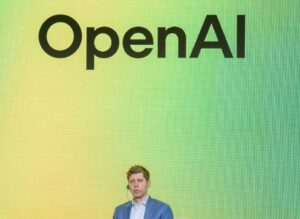OpenAI Aims for Its ‘Open’ AI Model to Utilize Cloud Models for Assistance

OpenAI’s New Open AI System: What to Expect
For the first time in about five years, OpenAI is preparing to launch a new artificial intelligence (AI) system that will be freely available for download. This initiative represents a significant shift, as it’s expected to allow users to access the system without the need for an API gateway, which has been the norm until now. According to a report by TechCrunch, OpenAI intends to release this open AI model in early summer, with performance levels anticipated to surpass those of similar models from competitors like Meta and DeepSeek.
Key Features of the Upcoming Open Model
One of the standout aspects of this new AI model is its potential to enhance reasoning capabilities. OpenAI seems poised to introduce a “handoff” feature that will allow the open model to connect with its cloud-hosted AI systems. This integration could enable the open model to address complex queries with greater accuracy and depth, as shared by sources familiar with the company’s developments.
Handoff Feature: How It Works
During a recent developer meeting, OpenAI’s CEO Sam Altman talked about how this handoff feature might function. Essentially, it would enable the open model to make calls to OpenAI’s API, which can provide access to larger and more powerful models housed in the cloud. This could significantly boost the computational power available to users of the open model.
Details about this feature remain vague, including whether users will be able to access special tools available to OpenAI’s models, such as web search capabilities and image generation. There are indications that the idea for this feature originated from feedback during OpenAI’s recent developer community forums. This suggests that the company is keen to engage with the open-source community as it refines its upcoming launch.
Competitive Landscape
A local model capable of leveraging more powerful cloud systems can be compared to the Apple Intelligence suite, which uses a combination of on-device models and models hosted in secure data centers. For OpenAI, this approach could yield several benefits. Besides the potential for generating additional revenue, it could also integrate more members of the open-source community into its broader ecosystem.
Challenges and Unknowns
While excitement grows around the new open model and its features, there are several uncertainties. It is still unclear how the handoff feature will operate, what pricing structures will be in place, and what limitations users may face in terms of access and usage rate. The model is still in its early development stages, and as with any cutting-edge technology, the details may evolve or change before the official launch.
Development Status
Reports indicate that OpenAI is working on constructing this new model from the ground up rather than modifying an existing one for this open release. Sources suggest that while this open model might not achieve the performance levels of OpenAI’s o3 model, it is expected to outperform the R1 reasoning model from DeepSeek in specific benchmarks.
This evolution marks a significant milestone for OpenAI and the broader landscape of artificial intelligence, as more accessible and robust models emerge for developers and researchers to utilize. With the landscape of AI constantly changing, the anticipation for this launch highlights the growing interest in open-source AI solutions and their implications for innovation in technology.






